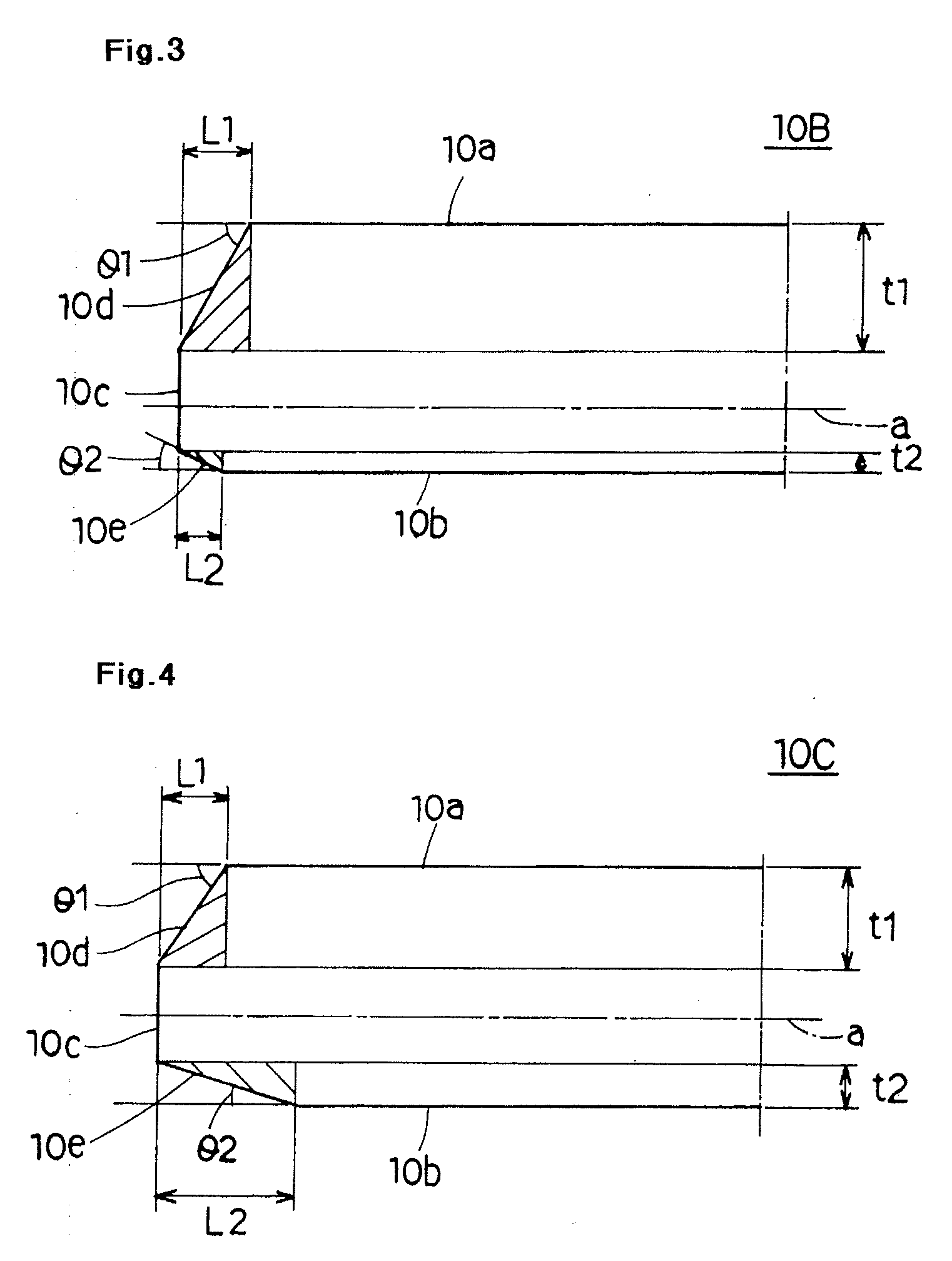Semiconductor wafer
- Summary
- Abstract
- Description
- Claims
- Application Information
AI Technical Summary
Benefits of technology
Problems solved by technology
Method used
Image
Examples
first embodiment
[0031]FIG. 1 shows a silicon wafer 10 (a semiconductor wafer) according to a first embodiment of the present invention. The silicon wafer 10 includes an outer edge surface 10c orthogonally intersecting with a front surface 10a and a back surface 10b and configuring an outermost peripheral edge, a front side-chamfered surface 10d connecting the outer edge surface 10c to the front surface 10a, and a back side-chamfered surface 10e connecting the outer edge surface 10c to the back surface 10b. When viewed in a cleavage plane that orthogonally intersects with the front surface 10a and back surface 10b of the silicon wafer 10, the front side-chamfered surface 10d and the back side-chamfered surface 10e are asymmetric to each other with respect to a virtual line a extending in a diametrical direction of the semiconductor wafer 10 as the center, at half a height of the outer edge surface 10c. In addition, a height t1 of the front side-chamfered surface 10d is greater than a height t2 of th...
PUM
| Property | Measurement | Unit |
|---|---|---|
| Length | aaaaa | aaaaa |
| Angle | aaaaa | aaaaa |
| Height | aaaaa | aaaaa |
Abstract
Description
Claims
Application Information
 Login to View More
Login to View More - R&D
- Intellectual Property
- Life Sciences
- Materials
- Tech Scout
- Unparalleled Data Quality
- Higher Quality Content
- 60% Fewer Hallucinations
Browse by: Latest US Patents, China's latest patents, Technical Efficacy Thesaurus, Application Domain, Technology Topic, Popular Technical Reports.
© 2025 PatSnap. All rights reserved.Legal|Privacy policy|Modern Slavery Act Transparency Statement|Sitemap|About US| Contact US: help@patsnap.com



